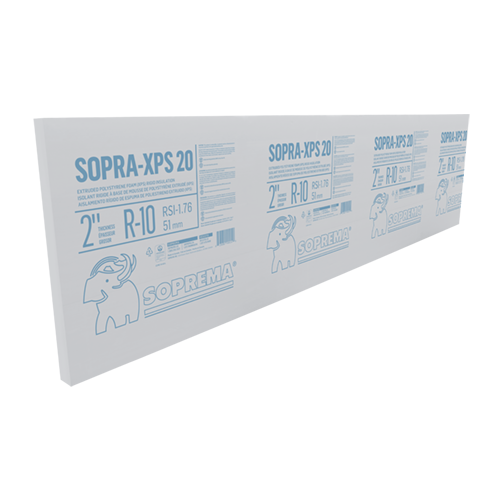Increased Recycled Content in SOPRA-XPS
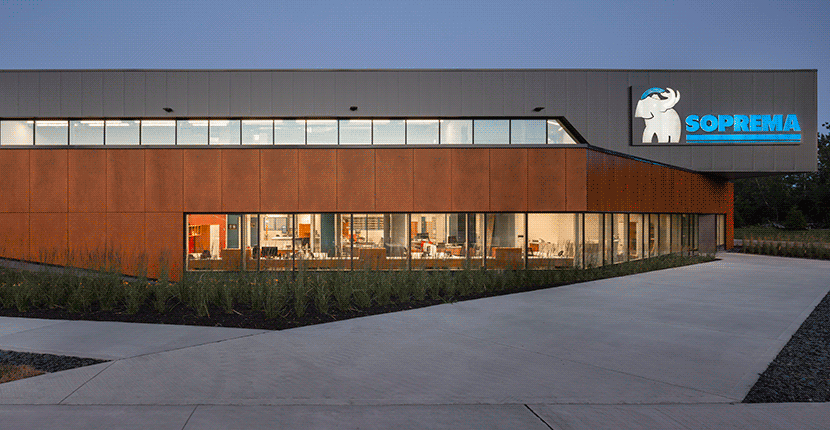
Generally, the construction industry is exerting more and more pressure on the environment due to the consumption of raw materials, commonly known as natural resources, and the waste of residual materials throughout the lifecycle of construction products.
SOPREMA is directly addressing the source of the problem by leveraging the potential of recycled materials. The evolution of the SOPRA-XPS product line paves the way for a whole new generation of eco-friendlier products, both in terms of supply and end of useful life. Moreover, the use of recycled materials reduces the environmental footprint of construction products while also reducing our dependence on fossil materials.
See how SOPREMA makes this form of source reduction a reality, and which is the best way to comply with the 4R Principle: reduction, reuse, recycle, and recovery.
FIVE QUESTIONS AND ANSWERS ON RECYCLED CONTENT
1. First of all, what does “recycled content” or “recycled material content” mean?
These are generally materials transformed so as to be reintroduced into a production cycle for the manufacture of new products. Normally, this approach prevents these materials from being sent to landfills or from being used in other more polluting recovery purposes.
2. Did you know that No. 6 plastic is recyclable?
Styrofoam cups, plates, bowls, vegetable or meat trays, and protective packaging for food, electronics and household appliances, etc. – those are some examples of polystyrene objects that are recyclable, and since they belong to the No. 6 plastic family, they represent most of the recycled polystyrene in SOPRA-XPS.
- The coveted polystyrene (PS) materials come mainly from food or protective packaging and containers made of extruded (XPS) or expanded (EPS) polystyrene. The fact that the material might be contaminated with food residues is not a problem.
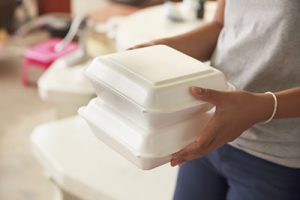
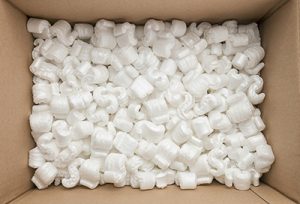
Due to consumers’ lack of awareness and since most recycling facilities still don’t collect them, polystyrene materials, although recyclable, tend to end up in the trash.
As a reference, between 2012 and 2016, the recycling rate of polystyrene (PS) containers and packaging from the residential sector in Québec was 21.2% [1]. Statistics published in 2016 show that only 18% of Quebecers would have access to a rigid polystyrene recycling service through selective collection, compared to 70% across Canada [2].
3. How does SOPREMA manage to recycle polystyrene?
SOPREMA works with companies seeking to recycle polystyrene. From the arrival of recycled polystyrene at the production of insulation boards, here is an overview of the main stages of the process related to the manufacturing of SOPRA-XPS products:
Arrival of the Recyclable Polystyrene
The recyclable materials arrive at the plant in their original form, whether in bales or densified. Densified polystyrene is generally in the form of blocks, coils or ingots, which makes it easier to transport.
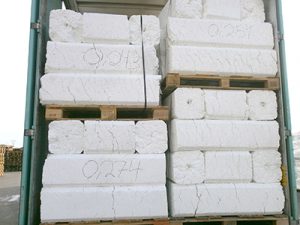
Polystyrene Processing
These materials are then crushed and transformed into small plastic balls through our production line dedicated to polystyrene recycling. This is the plastic ball extrusion process.
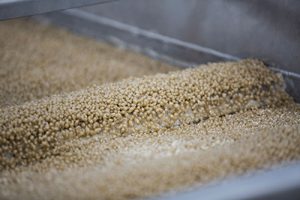
Insulation Board Production
The recycled plastic balls (in solid form) are mixed and heated with additives. Blowing agents are then added to the mixture in liquid form. The mixture is finally cooled and processed according to the dimensions and characteristics of the product. This is the insulation board extrusion process.
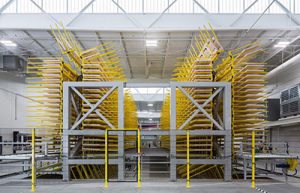
Residual Material Recovery from Production
Non-compliant products or even scraps generated during the cutting of insulation boards are systematically recovered, i.e. reintroduced into the manufacturing process to avoid waste.
4. Did you know that the SOPRA-XPS plant aims for zero waste?
The SOPRA-XPS plant has the potential to achieve zero waste in its production. As part of an eco‑efficiency mindset, the manufacturing process is designed to minimize losses at source and to efficiently reintroduce residues into the production cycle. Moreover, industrial ecology in the form of exchange and collaboration with various external partners promotes the recycling or recovery of residual materials.
- For the production of insulation boards, less than 10% of residual materials were sent for disposal (transported to landfills or incinerated), compared to 90% that were recovered (reintroduced) internally or recycled externally in 2019.
5. Did you know that SOPRA-XPS products are recyclable at the end of their useful life?
Residual materials generated on construction sites as well as products reaching the end of their useful life are recyclable. The SOPRA-XPS products now bear the No. 6 plastic classification symbol to promote their recycling.

RECYCLED CONTENT IN SOPRA-XPS PRODUCTS
Efforts to promote more responsible sourcing and to optimize the factory manufacturing process have contributed to significantly increasing the recycled content rate in the SOPRA-XPS product line*. This represents an increase of almost 42% from the previous rate measured in 2019.
- The post-consumer and pre-consumer recycled content validated by an independent third party according to ISO 14020/21 standards for the targeted SOPRA-XPS products is 24% to 43% [3].
- The total recycled content including the recovery of scraps and non-compliant products in the manufacturing process for the entire SOPRA-XPS product line varies between 57% and 71%.
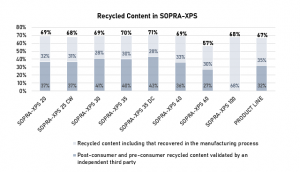
The previous graph clearly distinguishes the recycled content (with recovery) from that which is validated by the independent third party (post-consumer and pre-consumer). All products in the line, with the exception of SOPRA-XPS 100, are covered by our Recycled Content Certification.
*The recycled content varies according to the compression range. The global recycled content is made of one part of post- and pre-consumer content validated by CT Consultant, and another part which accounts for the manufacturing recovery value. Read our Recycled Content Certificate available at www.soprema.ca.
ISO 14020/21 AND ISO 7000-1135 STANDARDS EXPLAINED
A validated recycled content means that the manufacturer’s declaration has been verified by an independent third party in compliance with the requirements of ISO 14020/21 and ISO 7000‑1135. In environmental communication, the rules put forward by these standards are recognized internationally. The results appear in a Recycled Content Certification which remains valid for a period of 12 months after its release.
These standards indicate the general principles and rules to be followed for the environmental labeling and declaration (Type II environmental labeling) of a product. This means that data and information relating to the purchase and integration of post-consumer and pre-consumer recycled materials into products has been verified. This also includes the control of formulas and suppliers.
VERIFIED VS. DECLARED RECYCLED CONTENT
To facilitate understanding of the recycled content, it is important to define the terms “pre‑consumer” and “post-consumer”, which represent the verified content, and the term “recovery”, which represents the declared content.
- Pre-consumer: This refers to materials diverted from the waste stream during the manufacturing process. It excludes the reuse of materials, such as those resulting from reprocessing and regrinding or residues generated during a process; materials that can be recovered in the same process that generated them.
- Post-consumer: This refers to materials generated by households or commercial, industrial or institutional facilities in their role as an end user of the product, and which can no longer be used for the application for which they were designed. This includes material returns from the distribution chain.
- Recovery: This is the action of reintroducing or recovering products or residual materials generated by the products or the same manufacturing process to obtain new materials and avoid their elimination (i.e. landfill or incineration).
Depending on the requirements of ISO 14020/21 and ISO 7000-1135 standards, the method for calculating the recycled content and the certification sheet cannot include the recovery portion. Since nonconforming products and residues from the SOPRA-XPS production line originate from the same process, it is impossible to account for the portion of materials recovered (reintroduced) during product manufacture.
For the sake of transparency, SOPREMA presents the portion of verified recycled content (according to ISO standards) separately, compared to the declared content which includes the portion of recovered materials (reintroduced) during product manufacturing. Following this same logic, the content including recovery is therefore verified separately but is not presented in the Recycled Content Certification.
CONTRIBUTION TO LEED CERTIFICATION
The Recycled Content Certification contributes to SOPREMA’s efforts to support projects aiming for LEED™ certification. More specifically, the products covered by the Recycled Content Certification can contribute to the score and the calculation to obtain the following credits:
- Materials and Resources (MR): Building Product Disclosure and Optimization – Sourcing of Raw Materials (1 to 2 points).
- Recycled content validated by an independent third party in accordance with the requirements of ISO 14020/21 standards
- Post-consumer = value of 0.5
- Pre-consumer = value of 1.0
ABOUT SOPRA-XPS
SOPRA-XPS is a line of extruded polystyrene insulating boards made of closed-cell foam. They are used as thermal insulation for a multitude of applications, including walls, foundations, and inverted roofs. They are also used in the civil engineering sector (under roads, airstrips, etc.).
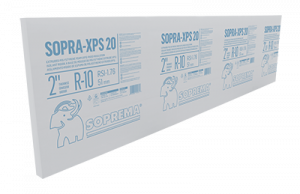
References
[1] Recyc-Québec et Éco Entreprises Québec [ÉEQ] (2017). Caractérisation des matières résiduelles du secteur résidentiel – Résultats 2012-2016 (Characterization of residual materials in the residential sector – 2012–2016 results).
[2] Recyc-Québec (2016). Guide technique sur la mise en valeur du polystyrène postconsommation (Technical guide on the valorization of post-consumer polystyrene).
[3] CT Consultant (2020). Fiche d’attestation du taux de contenu recyclé : SOPRA-XPS (Recycled content certificate: SOPRA-XPS).
